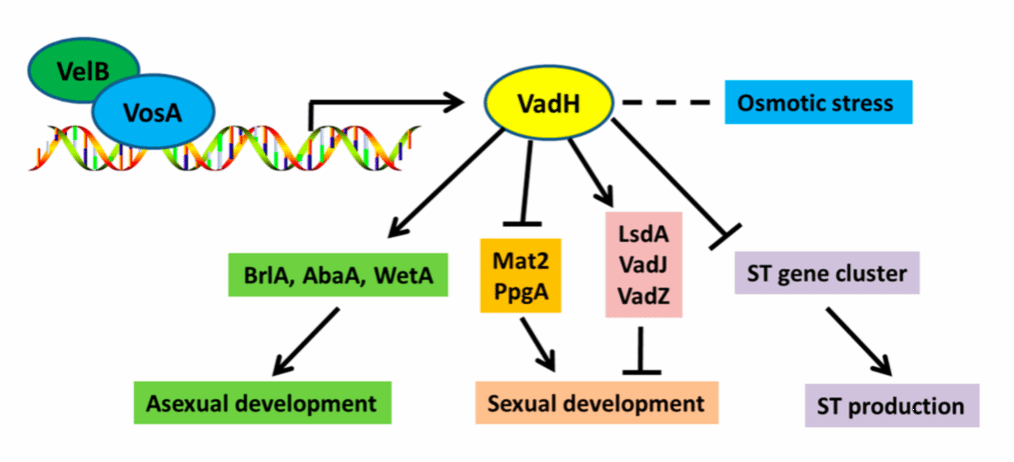
Abstract:
The VosA-VelB hetero-dimeric complex plays a pivotal role in regulating development and secondary metabolism in Aspergillus nidulans. In this work, we characterize a new VosA/VelB activated gene called vadH, which is predicted to encode a 457-amino acid length protein containing four adjacent C2H2 zinc-finger domains. Mutational inactivation of vosA or velB led to reduced mRNA levels of vadH throughout the lifecycle, suggesting that VosA and VelB have a positive regulatory effect on the expression of vadH. The deletion of vadH resulted in decreased asexual development (conidiation) but elevated production of sexual fruiting bodies (cleistothecia), indicating that VadH balances asexual and sexual development in A. nidulans. Moreover, the vadH deletion mutant exhibited elevated susceptibility to hyperosmotic stress compared to wild type and showed elevated production of the mycotoxin sterigmatocystin (ST). Genome-wide expression analyses employing RNA-Seq have revealed that VadH is likely involved in regulating more genes and biological pathways in the developmental stages than those in the vegetative growth stage. The brlA, abaA, and wetA genes of the central regulatory pathway for conidiation are downregulated significantly in the vadH null mutant during asexual development. VadH also participates in regulating the genes, mat2, ppgA and lsdA, etc., related to sexual development, and some of the genes in the ST biosynthetic gene cluster. In summary, VadH is a putative transcription factor with four C2H2 finger domains and is involved in regulating asexual/sexual development, osmotic stress response, and ST production in A. nidulans.
全文连接:https://doi.org/10.3390/cells11243998